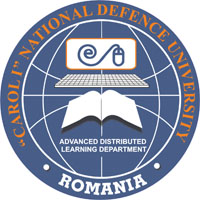STUDY ON IMPROVING THE SERVICE UNFORCED ERRORS IN VOLLEYBALL GAME BY USING A STATISTICAL SOFTWARE
STUDY ON IMPROVING THE SERVICE UNFORCED ERRORS IN VOLLEYBALL GAME BY USING A STATISTICAL SOFTWARE
Author(s): Dan Alexandru SzaboSubject(s): Education
Published by: Carol I National Defence University Publishing House
Keywords: service; volleyball; sport; statistical; software
Summary/Abstract: There is, at this point, a number of instruments and tools, computer-generated very different in shape and complexity, which have improved considerably in recent years, in terms of versatility and technical possibilities, the extent of their applicability and the facility with which it can be used. The modern volleyball game is characterized by speed and variety of actions, through the continuous improvement of operations, tapping the ball increasingly taller, creativity in building combinations in attack and defense, and a stronger and efficient service, because the service is the first element in winning a point. The research aims to create and, where appropriate, structuring, periodization and reconfiguring quantitative and qualitative, longitudinal and transverse training programme, depending on the data and information provided by the program Click & Scout, in order to improve the element of service in volleyball and obtaining better results in competitions. In this context, the effective preparation of the team shall be subject to the development and implementation of programmes with an appropriate content in relation to the desiderata contained, which may be carried out only to the extent that those in charge of their development have the necessary information and logistical means, to make these new information, operational extrapolating them from theory in the practice of athletic training. The main goal of the study is the commitment of the coaches, with specialization in volleyball, by the importance and necessity of implementing a particular specific training program, specializing in the use of service by transforming this technical element in the element of efficiency.
Journal: Conference proceedings of »eLearning and Software for Education« (eLSE)
- Issue Year: 11/2015
- Issue No: 03
- Page Range: 320-326
- Page Count: 7

